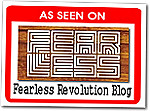 Note: There are no spoilers in this post. Because seriously, it’s an action movie!
Note: There are no spoilers in this post. Because seriously, it’s an action movie!
Watching The Avengers this weekend, it struck me – whether one is working with an internal team, a community coalition, or a board of directors, at some point we have all seen the likes of Iron Man, Captain America, Black Widow, Hawkeye, Thor and the Hulk.
Who among us hasn’t tried to get a group’s cocky know-it-all to play nice? Or hasn’t worked alongside the old fashioned guy who appears to be a bit out of touch? We’ve all encountered the person who seems talented at just about everything, but who we still don’t entirely trust. There’s the rich guy. The geeky guy. The token fill-in-the-blank (in this case, a woman). There’s the person who shows up at the last minute, as if to save the day. And the outsider, who clearly doesn’t fit in but wields one hell of a hammer.
And of course what team would be complete without the person who, seemingly without warning, turns into a beast?
So how does one turn a group of talented yet quirky individuals into a well-functioning team?
Step 1: Get to Know Each Other as People First
Was the first time you met with your board like the first time the Avengers met together? Did you eye each other, wondering who all those other people were and how you were supposed to fit in?
That’s why Step 1 is to simply spend time being PEOPLE first.
Your board will be working together for months – perhaps years. Doesn’t it make sense to take time to get to know each other? Take an entire meeting (perhaps once a year, as orientation) for people to share the path that led them to care about the reason for the group’s existence. At regular meetings after that, take the first 10 minutes to share something fun or meaningful that has happened to each person on the team.
This isn’t just about team building; it is actually Risk Prevention 101. That’s because when teams fall apart, it is ALWAYS (not sometimes, always) the people part that has failed.
Without getting to know each other as people, we can only judge people on their external behaviors. It’s the difference between treating Bruce Banner as if he is always the Hulk, all the time – or believing that deep inside The Hulk, we can find and somehow relate to the tender and brilliant scientist.
Step 2: Aim at Something Bigger Than Yourselves
When they were first brought together, the Avengers were focused on their individual tasks. Not unlike some of the task-focused groups all of us have been part of at some time or another, the superheroes bickered. They goaded each other. One became very large and green and nasty.
When these superheroes instead focused on accomplishing a huge outcome greater than themselves, they coalesced around the reason they were there – the why, the because.
For Step 2, then, at every meeting, begin beyond the tasks. Begin by talking about what will be different if those tasks are accomplished. Start with the end in mind – the highest potential result of the work you are doing together. When all those tasks are completed, and the result is successful, what will be different? For whom? What is important about that?
The context of a peaceful universe allowed the individual superheroes to become a single, unstoppable team. What is the end result – the peaceful universe – your team is striving to create by its work together?
Step 3: Identify and Harness Your Strengths
In the first half of the movie, an out-of-control Hulk almost kills the whole team. Yet moments later, Tony Stark is seen facing the team’s adversary. “I have an army,” says the bad guy. “We have a Hulk,” brags Stark about the guy who almost just annihilated every one of them.
How much time and energy do boards and other work teams spend on what is not working? How often do they spend precious hours on “problems to be solved,” “weaknesses to address,” all with “limited resources.” Talk about setting ourselves up to fail even before we begin!
When groups instead identify and harness the strengths each member brings to the team, we build strength into the work itself. Just as each member of the Avengers learned, what had been perceived as a weakness or a problem (for example, a guy who almost kills all his teammates) might actually be an asset.
For Step 3 then, have group members identify the strengths they see in everyone else in the room. Having already done Step 1, even a new team can find evidence of passion and wisdom and experience, all bubbling up from those life stories.
We may see our old fashioned ways as a handicap, but the group will likely find wisdom in the experience of the plain-spoken Captain America. Look for strengths, and you are likely to find you have everything you need (including connections to other resources) right there in the room.
The Ultimate Lesson
We can accomplish so much more together than any one person, no matter how gifted, can accomplish on his/her own. When we get to know each other as individuals with significant strengths to share, and we dedicate ourselves to make a huge difference together, there is nothing we cannot accomplish.
With or without a Hulk.
Art Credits: Hulk on the Berlin Wall posted to Wikimedia Commons by Gorgalore; Captain America posted to Wikimedia Commons by Raitchobbo; and WOW Comics by Fawcett Comics, posted to Wikimedia Commons by Chordboard
